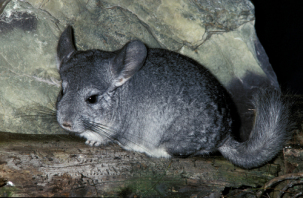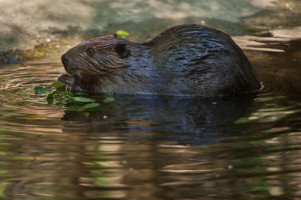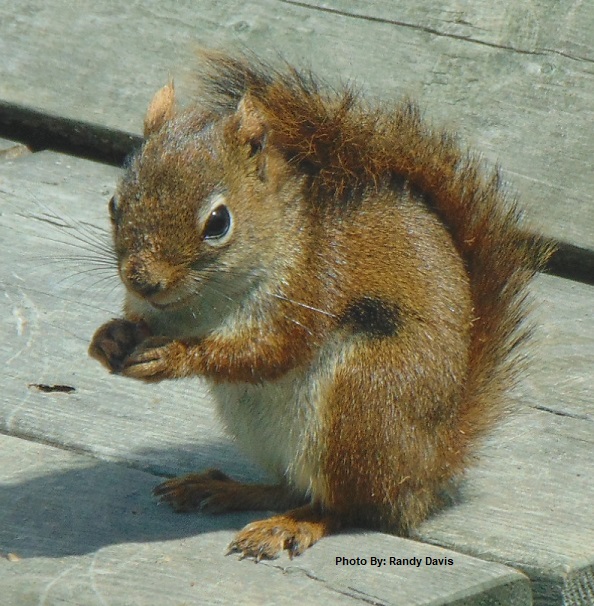Some people love them, whereas others simply can’t stand them. To some, they’re cute little creatures with inquisitive eyes and fuzzy little whiskers; to others, they’re absolutely terrifying – despite how small they might be!
Rodents really are a divisive topic; revered by some societies, and absolutely hated by others! The thing is that the word ‘rodent’ can apply to THOUSANDS of different species. Sure, there are the usual contenders, such as mice and rats, but did you know that squirrels are rodents, too? Or porcupines? Or even the strangely huge Capybara?
‘Rodent’ is simply the name given to any animal that falls within the ‘Rodentia’ order of the Animal Kingdom. It’s a very broad subject, with an estimated 2,277 species of (known) rodents in the world – in fact, up to 40% of EVERY mammal species on the planet are considered to rodents!
Due to the massive number of these creatures, rodents are understood to be one of the most varied and diverse orders known to us.
From underground burrowers, to lake dwelling voles, treetop hiding spaces to mountainous caves. Rodents can be found in every known corner of the worth – so, despite their differences, what brings them all together?

Defining Characteristics
Every species of animal found within the Rodentia order share one common characteristic; a pair of incisors in the upper and lower jaws that never stop growing.
Rodents are incredibly adaptive, and can be found on every continent throughout the world – with the exception of Antarctica. Due to their adaptable nature, though, they WILL thrive wherever they are found.
Aside from their natural abundance, most rodents are very cunning. They’re sneaky, resourceful and sly, well-suited for nearly any environment. Rodents are just as common in rural areas as they are in built up areas – in fact, you might even be unknowingly sharing your home with them!
The majority of rodent species are very small, meaning they can sneak around undetected through floorboards, walls and foliage. They’ll generally have plump, small bodies, short limbs and long tails. This isn’t always the case, though – for example, the elusive capybara can grow up to 1.3m long!
Rodents are usually omnivorous, and are best suited to a mixed diet of meat and veg. It does very between species, however – some are herbivorous entirely.

Rodents and Humans
Humans and rodents share a very complex relationship, dating back over centuries. Whilst rodents are an essential part of our ecosystem, providing many necessary services, they haven’t always had the most positive stigma.
Rats, for example, are often associated with disease and illness; one rat has the power to shut down an ENTIRE restaurant, and you probably wouldn’t be happy to find one in your house. In the wild, this might bear some truth, though it’s rarely the rodent that carries diseases, it’s usually the fleas. Some rats, such as the black rat, are largely considered to be pests due to their insistence on eating anything and everything that you might try to grow.
Rodents are widely kept as pets, as they can be loving, friendly, and most importantly… easy to take care of. Mice, rats, guinea pigs, gerbils and hamsters are only a few of the more common options – they’re relatively low maintenance, and cheap to care for. Some rodent pets, such as the chinchilla or degu, provide a more exotic selection for more pet-owners with greater experience.
Rodents, white mice in particular, have also been absolutely crucial to the development of the human race. Due to their high intelligence and similarity to humans, they’re generally used by scientists to develop new medicines and theories.
Are Rodents Social?
For the most part, rodents are incredibly social creatures. Anyone who’s owned rats or mice before will know that they have to be kept in pairs or groups, and social interaction is an integral part of their development.
Rodents aren’t only social towards each other; they can also develop very close bonds with humans – especially pet-owners or other people who might regularly feed and interact with them.
There is one major exception: hamsters. Hamsters can’t stand being in their own company – even when they’re raising their young! Despite how common they are, hamsters can be a little tricky to keep as pets, largely due to their unsocial nature.
Can all Rodents be Domesticated?
Just like with any other species, genus or order, not all rodents can be domesticated. They might be incredibly popular as pets, but there are still an incredibly large amount of rodents in the wild.
Rats, mice, and squirrels can be found in nearly every country, in most kinds of environment. Wild animals can be tamed to an extent – especially rats – though you should remember that they are wild animals and should not be considered to be pets.
Some rodents, such as water voles or porcupines, are exclusively wild animals. They aren’t considered to be pets to any extent, thriving only in natural wild conditions. This might be due to their timid nature, or that they require living conditions that can’t easily be replicated in the home.
It is possible to form a bond with wild animals, but you should NEVER attempt to keep any wild animal as if they are a pet.

Unusual Facts about Rodents
- Syrian hamsters are rarely found in the wild, and are nearly exclusively considered to be pets! They’re understood to be one of the smallest breeds of hamster, though there are still a few communities of wild Syrian hamsters.
- Mice have a seemingly insatiable hunger, and can eat up to 20 times a day – make sure to leave them with lots of food.
- Rats are pretty confident swimmers. In fact, they can swim for up to three days straight!
- Rats are considered to be one of the smartest animals in the world, not just in the Rodentia order.
- Many rodents possess the ability to rehydrate through eating, so they can often survive for long periods without access to water.
